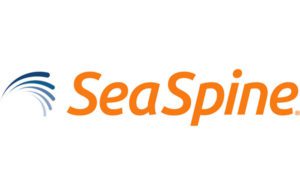 SeaSpine Holdings (Nasdaq: SPNE) today announced the 100th worldwide placement of its 7D Flash navigation system.
SeaSpine Holdings (Nasdaq: SPNE) today announced the 100th worldwide placement of its 7D Flash navigation system.
7D Flash uses visible light to create a three-dimensional image for surgical navigation in just seconds. SeaSpine says the fast 3D imaging results in shorter and more efficient spinal procedures with less radiation exposure. Novel and proprietary camera-based technology and machine-vision algorithms have enabled the 7D Flash’s features.
Inova Fairfax Hospital in Virginia purchased the 100th system.
“Their unique segmental referencing method and Flash navigation system will protect patients and providers from the cumulative effects of radiation while allowing for more accurate placement of spinal fixation. We can virtually eliminate use of X-ray during the surgery and overall reduce radiation for the patient and save time compared to other navigation systems,” orthopedic surgeon Dr. Laurel Blakemore said in a news release.
More about SeaSpine’s 7D Flash surgical navigation
The 7D Flash’s speed, accuracy and efficiency provides significant economic value, according to the company. In addition, it lowers radiation for staff and patients in open procedures and harnesses the true potential of image-guided navigation.
Another recent installation occurred at Parkview Orthopedic Hospital in Indiana with Dr. Ahmer Ghori.
Said Ghori: “The Flash Navigation system eliminates intraoperative radiation associated with the ‘spin’ required for traditional navigation technologies, thus leapfrogging operative efficiency while protecting patients and providers from the cumulative effects of radiation. FLASH technology eliminates the challenges of changing the anatomy intra-op with positioning, interbody work, or simply by knocking the reference frame.”
SeaSpine acquired 7D Surgical and its surgical navigation technology for $110 million in 2021.
Brian Stuart, the company’s VP of sales and enabling technologies, expects more growth. “As we continue to deliver new functionality like the recently launched percutaneous spine module for minimally invasive spine procedures, we expect to see continued growth throughout the U.S. and around the world with this game-changing technology.”